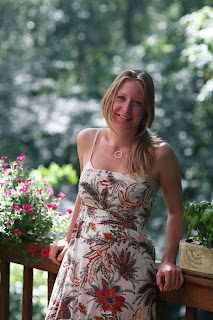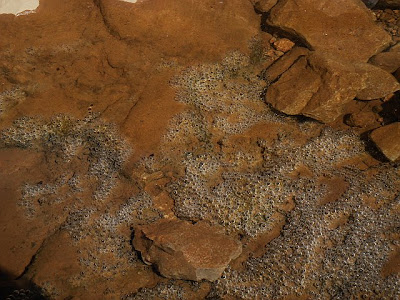Maybe we should take a lesson from the "3rd World"
Fannie Mae and Freddie Mac stumbled, in great part, due to demands by congress that they make more loans available to low-income borrowers (see Herald Tribune, http://www.iht.com/articles/2008/10/05/business/fannie.php). They are called "risky borrowers" hailing from the "treacherous corners of the mortgage market". Maybe this label only applies relative to higher strata of American borrowers. When compared to many Bangladeshi or Mexican loan-seeking applicants, they might actually look quite attractive. Basic assumptions about the borrowers changes. For example: their familiarity with financial institutions, or indeed, handling money itself. Maybe these individuals could actually be successful borrowers under a lending scheme that catered more directly to their situations.
What I am driving at, is the suggestion that some principles from the Microfinance industry, (so popular among disenfranchised in the developing world) might apply. Mohammed Yunus, in his development of one of the first microcredit institutions in Bangladesh, recognized that the modern banking industry is geared toward the collateral-possessing, money-washed rich (or at least middle class). Typically, this process excludes the poorest sectors. Fannie Mae and Freddie Mac have been the U.S. government's semi-private answer to this sector of Americans. However, these loans are still labeled "risky" or "treacherous".
But what makes them risky? Treating them like any other typical loan. A lending agency operates on the assumption that they must have good credit and/or collateral, and are well acquainted with savings, paying off previous expenditures or budgeting, for instance. Just the slightest touch of condescension is sprinkled into the conversation. Maybe this assumption should not be made. Could teaching tools, or a mentorship-type role make a difference? Fannie Mae and Freddie Mac certainly do not consider themselves educators, by any stretch of the imagination. For any bank in the U.S. to consider it their job to educate their clients, or mentor them sounds slightly ludicrious. But Mohammed Yunus, winner of the 2006 Nobel Peace Prize for his work in creating the international phenomenon of microlending, recognized the need to take a partner role in helping the poor dig themselves out of a deep, impoverished pit. He realized that neither traditional banking practices, nor loan-seeking applicant requirements would suit this sector.
Loans have to be engineered to help poor pay them off. This, in part, means minuscule but frequent repayments. The Grameen Bank has an astounding 98.08% repayment rate. Be reminded that all of their clients would fall far below the traditional borrower standards. Often initial loans amount to $50. The Bank puts borrowers in groups that became both a support-group, and social/financial pressure to keep their word, as each group member depends on, and suffers with each other. If one lender fails to make a payment, the group is responsible for her. Lenders visit borrowers in their homes, or in a community building weekly. They help individuals set goals, and have factored crisis into the system... providing a safety net for the realities of their borrowers' often tumultuous lives. A famine can wipe out an individual's entire possessions, or even the lives of family members. Fluctuations of a few pennies, in the world market prices for wheat can consume an individual's entire income, or wipe out their profits from crops. Few Americans - even the poorest sectors - feel the affects of such events as the rising price of wheat. For us it is a distant problem, but one that must be factored into the livelihood of the poor.
In America, the poorest sector right is obviously suffering from high petrol prices, and high (or "ballooning") interest rates on homes. Commuting to a low-paying job suddenly becomes financially unfeasible, and utility bills consume any discretionary spending left. Thousands more are literally losing the roofs over their heads. Under our banking system, the quiet mumbling is that these were "poor-credit, risky borrowers" to begin with. The solution, among our institutions, seems to be that the banking system should never have offered them loans. They are pitied, but no clear solutions are offered. A tax-refund handout, is an unsustainably petty attempt to correct their financial slide. The solution should be to see these borrowers as some middle-term group, hovering between credit-worthy, collateral-posessing borrowers; and the impoverished groups that need the attention of a microcredit institution to pull them out of the poverty cycle.
The Grameen Bank (Mr. Yunus' institution) has Sixteen Decisions that its borrowers must declare, in taking out a loan. These include such declarations (at once incredulously basic and visionary-idealistic) as "Prosperity we shall bring to our families", "We shall not live in dilapidated houses, we shall repair our houses...", "We shall grow vegetables all year round, we shall eat them and sell the surplus", "We shall keep our families small". These are necessary actions for this impoverished families. They would be ridiculous to require of the average CEO of an American company taking out another loan; some portions of them may not be so ridiculous for the poorest Americans. They speak to diet, maintaining one's home; providing and planning for one's family... valuable lessons.
We should take away the standard assumptions that loans operate on, and look at the unique situation of this bracket of borrowers. Credit, as Mohammed Yunus declares, should be a basic human right. The circumstances of providing that credit, however, should be tailored to varying income-brackets far beyond balance sheets and credit scores.
What I am driving at, is the suggestion that some principles from the Microfinance industry, (so popular among disenfranchised in the developing world) might apply. Mohammed Yunus, in his development of one of the first microcredit institutions in Bangladesh, recognized that the modern banking industry is geared toward the collateral-possessing, money-washed rich (or at least middle class). Typically, this process excludes the poorest sectors. Fannie Mae and Freddie Mac have been the U.S. government's semi-private answer to this sector of Americans. However, these loans are still labeled "risky" or "treacherous".
But what makes them risky? Treating them like any other typical loan. A lending agency operates on the assumption that they must have good credit and/or collateral, and are well acquainted with savings, paying off previous expenditures or budgeting, for instance. Just the slightest touch of condescension is sprinkled into the conversation. Maybe this assumption should not be made. Could teaching tools, or a mentorship-type role make a difference? Fannie Mae and Freddie Mac certainly do not consider themselves educators, by any stretch of the imagination. For any bank in the U.S. to consider it their job to educate their clients, or mentor them sounds slightly ludicrious. But Mohammed Yunus, winner of the 2006 Nobel Peace Prize for his work in creating the international phenomenon of microlending, recognized the need to take a partner role in helping the poor dig themselves out of a deep, impoverished pit. He realized that neither traditional banking practices, nor loan-seeking applicant requirements would suit this sector.
Loans have to be engineered to help poor pay them off. This, in part, means minuscule but frequent repayments. The Grameen Bank has an astounding 98.08% repayment rate. Be reminded that all of their clients would fall far below the traditional borrower standards. Often initial loans amount to $50. The Bank puts borrowers in groups that became both a support-group, and social/financial pressure to keep their word, as each group member depends on, and suffers with each other. If one lender fails to make a payment, the group is responsible for her. Lenders visit borrowers in their homes, or in a community building weekly. They help individuals set goals, and have factored crisis into the system... providing a safety net for the realities of their borrowers' often tumultuous lives. A famine can wipe out an individual's entire possessions, or even the lives of family members. Fluctuations of a few pennies, in the world market prices for wheat can consume an individual's entire income, or wipe out their profits from crops. Few Americans - even the poorest sectors - feel the affects of such events as the rising price of wheat. For us it is a distant problem, but one that must be factored into the livelihood of the poor.
In America, the poorest sector right is obviously suffering from high petrol prices, and high (or "ballooning") interest rates on homes. Commuting to a low-paying job suddenly becomes financially unfeasible, and utility bills consume any discretionary spending left. Thousands more are literally losing the roofs over their heads. Under our banking system, the quiet mumbling is that these were "poor-credit, risky borrowers" to begin with. The solution, among our institutions, seems to be that the banking system should never have offered them loans. They are pitied, but no clear solutions are offered. A tax-refund handout, is an unsustainably petty attempt to correct their financial slide. The solution should be to see these borrowers as some middle-term group, hovering between credit-worthy, collateral-posessing borrowers; and the impoverished groups that need the attention of a microcredit institution to pull them out of the poverty cycle.
The Grameen Bank (Mr. Yunus' institution) has Sixteen Decisions that its borrowers must declare, in taking out a loan. These include such declarations (at once incredulously basic and visionary-idealistic) as "Prosperity we shall bring to our families", "We shall not live in dilapidated houses, we shall repair our houses...", "We shall grow vegetables all year round, we shall eat them and sell the surplus", "We shall keep our families small". These are necessary actions for this impoverished families. They would be ridiculous to require of the average CEO of an American company taking out another loan; some portions of them may not be so ridiculous for the poorest Americans. They speak to diet, maintaining one's home; providing and planning for one's family... valuable lessons.
We should take away the standard assumptions that loans operate on, and look at the unique situation of this bracket of borrowers. Credit, as Mohammed Yunus declares, should be a basic human right. The circumstances of providing that credit, however, should be tailored to varying income-brackets far beyond balance sheets and credit scores.





















































